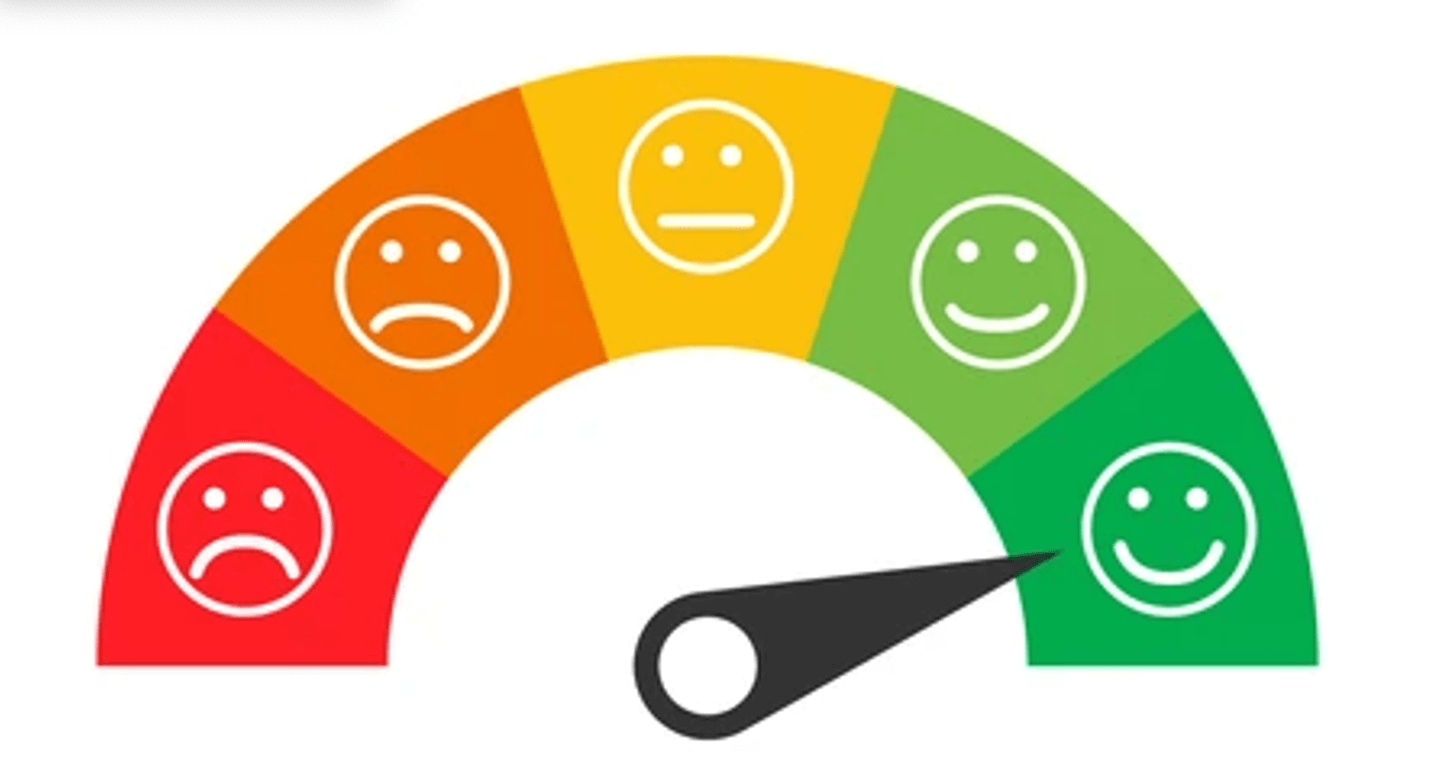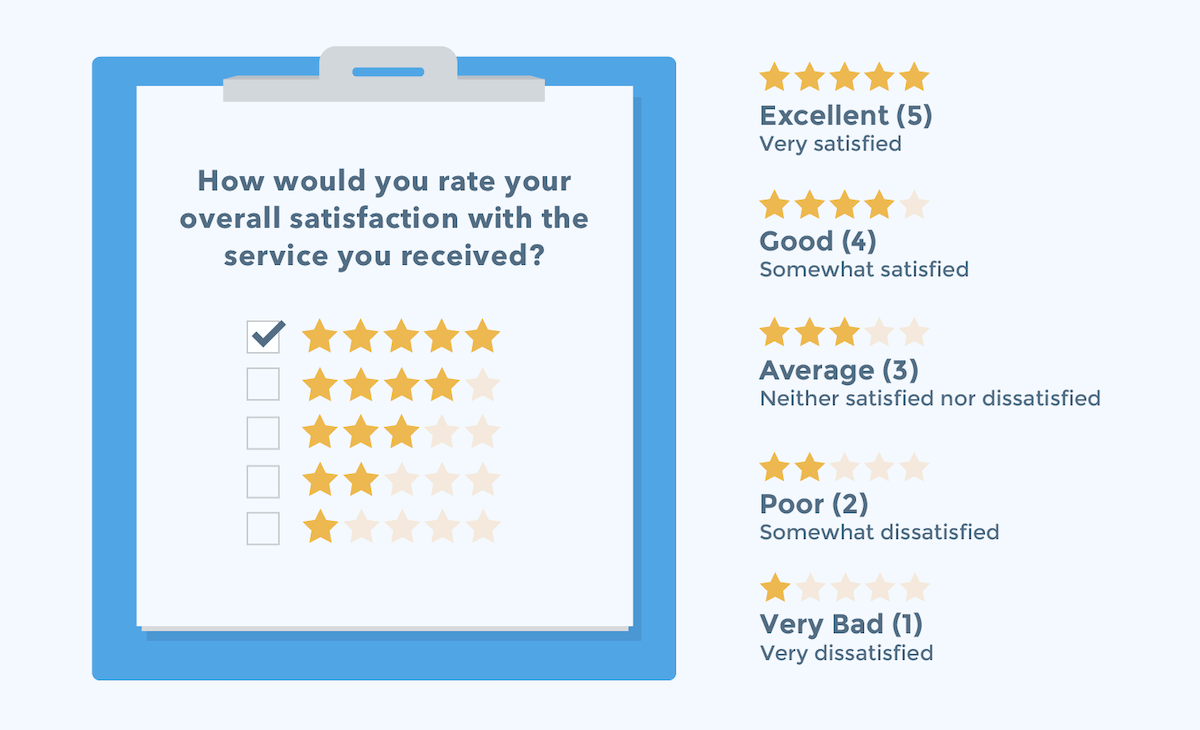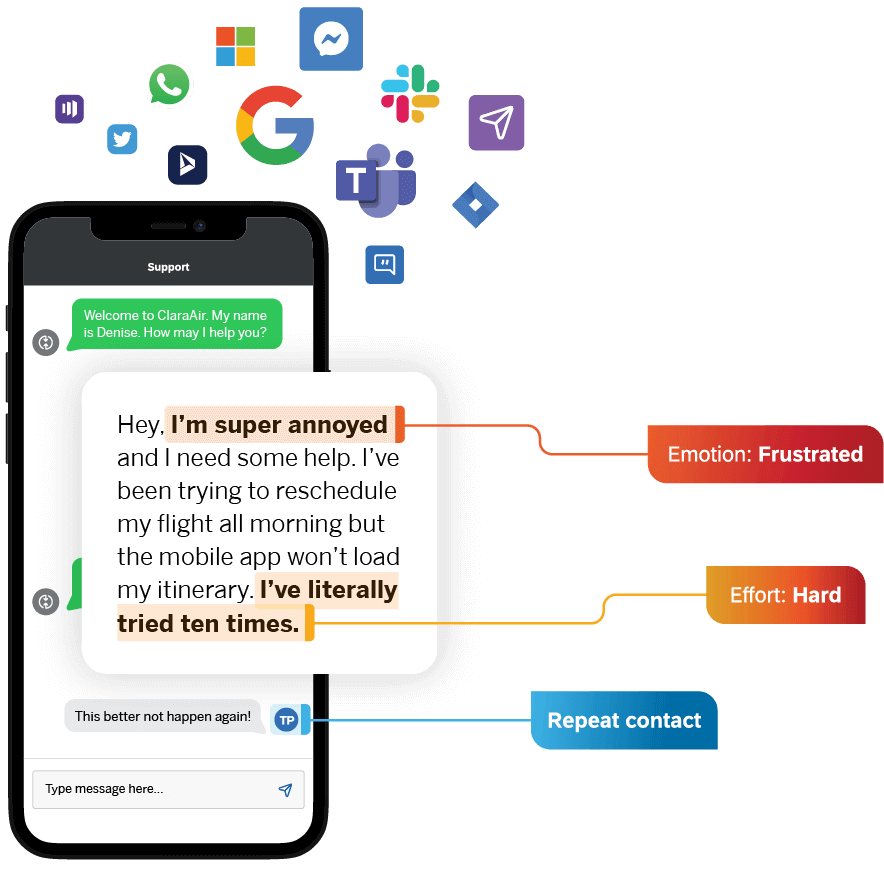What is customer satisfaction?
When you think about customer satisfaction, you might immediately think about CSAT – the globally-recognised metric derived from customer satisfaction surveys. But, in reality, to increase customer satisfaction is to do much more than just monitor a single metric: satisfaction is a feeling your customer has, and it’s a benefit your business can harness.
“The customer’s perception is your reality.”
– Kate Zabriskie, President, Business Training Works Inc.
Improving customer satisfaction relies on finding out where the gaps in the customer experience lie, and working to fix them. Sometimes that means finding out on your own, but often it means learning about those gaps directly from your customers. That’s because true customer satisfaction comes from letting people feel heard, understood, and valued.

So when we talk about customer satisfaction, what we’re really talking about is listening and acting to ensure that every single interaction of a customer’s journey, across every channel, is a positive one.
- Supercharge your customer satisfaction
Because when that’s the case, customers will feel incentivised to come back, to become loyal, and – ultimately – to produce high scores on CSAT questionnaires.
Why is customer satisfaction important?
It’s not enough simply to have great products, and branding alone won’t win people to your cause. These days the experience of interacting with a brand is an omnichannel one, which means more avenues for discourse, more channels to look after, and greater reputational risk.
But if you can manage that experience to the point where you can actively improve customer satisfaction, you’ll see real business benefits.
- Consumers are 5.1x more likely to recommend an organisation after a positive customer experience
- Consumers are 3.3x more likely to trust a brand after a positive experience
- Consumers are 2.6x more likely to purchase more after a positive experience
Research by McKinsey & Company suggests that maximising satisfaction along the customer journey could lift revenues by up to 15% and – at the same time – lower the cost of serving your customers by up to 20%. Our own research, meanwhile, shows that customer loyalty can be directly affected: 94% of consumers who rate a company as very good in CX are likely to purchase again and recommend it to a friend.
Get that right and you’ll also boost revenue. Our studies show that increasing customer retention rates by a mere 5% will increase profits by 25-95%.
How do you measure customer satisfaction?
Measurement is an important part of improvement. After all, you can’t know if you’re making strides in the right direction without regular benchmarking. Here’s how you do just that:
1. Conduct customer satisfaction surveys
The primary way of measuring customer satisfaction is, perhaps unsurprisingly, customer feedback.
But how you collect that feedback is super important. Later in this guide, we’ll talk about the more sophisticated and holistic ways you can gather input from your customers, but CSAT as a score is based on survey questions, so let’s start there because it’s nice and simple.

At its simplest, the question you’ll want to ask to get a view on customer satisfaction is as follows: ‘How would you rate your overall satisfaction with the goods/service you received?’ That question should then offer a range of possible responses on a scale from one to five:
1. Very unsatisfied
2. Unsatisfied
3. Neutral
4. Satisfied
5. Very satisfied
2. Calculate your CSAT (Customer Satisfaction) score
We’ve mentioned that a CSAT score isn’t the end goal, but it is a fantastic way of measuring customer satisfaction trends over time, to learn how things are progressing. It’s how you can track the impact of your actions.
Luckily, calculating yours is fairly straightforward. Once you’ve completed your customer satisfaction survey as detailed above, simply collate your customer feedback and run this calculation to arrive at a percentage of satisfied customers:
(Number of satisfied customers [those scoring 4 and 5] / Number of survey responses) x 100
It’s important to remember, though, that a CSAT score heading in the right direction is just part of a wider journey, rather than the desired end result. If you’re serious about finding ways to improve customer satisfaction, you should ready yourself for a continuous process of improvement and learning.

It’s never a one-and-done, so while a CSAT score that trends upwards is fantastic, there are always improvements that can be made, and new customer feedback to listen to.
What causes low customer satisfaction?
Before you can fix something, you need to know why it’s broken. And customer satisfaction is no different. Broadly, low customer satisfaction comes from a disparity between expectation and reality. Any customer who expects one kind of experience and receives something different will feel hard done by, mislead, and, well… Dissatisfied.
“We think our job is to take responsibility for the complete user experience.
And if it’s not up to par, it’s our fault, plain and simple.”
– Steve Jobs
That’s what we mean when we talk about ‘closing gaps’ in the customer experience – it’s those rifts between what you claim to offer and what’s actually on the table. Before you attempt to move the needle in the right direction, you need to consider a couple of questions that – in a sense – define customer satisfaction:
- Are you setting the right expectations?
- Are you delivering your desired experiences?
And those questions can apply to every part of the customer experience. Here are a few key reasons that your metrics around customer satisfaction might be heading in the wrong direction:
Product quality
Often, organisations find themselves needing to increase customer satisfaction for one simple reason: the promise of their product outstrips its reality. If that’s the case, your customer feedback will be fairly focussed, but the problem may also have knock-on effects – like overwhelming your customer support team or opening you up to reputational damage on social media.
Price surprises
If customers feel that you’ve promised or promoted a specific price that doesn’t match up to what they’ve been charged, they’ll leave unhappy. That can include hidden charges or fees, or advertising expired discounts.
Poor delivery
Delivery might very well mean physical delivery here – has a product turned up late, damaged, or not at all? But it might also mean delays in digital delivery or even substandard formatting on documentation. Either way, if delivery lets people down, you’ll see customer satisfaction levels fall.

Poor customer service
Customer support plays a massive role in the quality of the overall customer experience, so your customer service representatives can be hugely responsible for increasing customer satisfaction. Think about how well customers are currently being served when they come to you for help.
A complicated experience
Is your website or app getting in people’s way? You might have the best, most desirable product or survey in your field, but if the experience of purchasing frustrates people, you’re likely to face unhappy customers, poor customer feedback, and low overall customer satisfaction levels.
How to improve customer satisfaction
Ok, so it’s time for the all-important question: how do you increase customer satisfaction? How can you boost customer relationships and drive better customer loyalty? The very short answer is: by listening and making proactive changes – continuously over time. Loyal customers aren’t won by one-off tricks, and unhappy customers won’t be convinced by a quick discount.
The longer answer is, naturally, a bit more complex. But with the tools available in today’s CX tech stack, it’s actually never been easier to make a big impact on customer satisfaction (and customer churn) – and to do so at scale. Here’s how:
1. Make your customers feel heard
You need to understand each individual customer’s journey in order to take the steps that really improve customer satisfaction. To do that, you need to think in 360º, omnichannel terms. That means utilising a modern, AI-powered Experience Management suite that can listen to customers wherever they are.
Your brand is being spoken about on more platforms and in more places than ever before, so asking humans to try and collate and make sense of all these conversations is impossible. Artificial intelligence and machine learning, however, can scour every online review, every tweet, every email, and every call, and record the sentiment behind the interaction to highlight those all-important experience gaps.
2. Map emotion, effort, and intent
Once you’re listening to every customer interaction and piece of customer feedback – in all the right places and on a continuous basis – you can use experience management tools (such as Qualtrics XM Discover) to derive a powerful amount of meaning from customer feedback.

If you really want to know where the problems lie, you need to be able to map contextual data against every interaction. The traditional Customer Effort Score (CES) metric is great for this, but at Qualtrics, with our AI-powered Experience iD tool, we like to go two steps further: classifying every customer interaction in terms of emotion, effort and intent.
- Emotion: Is the customer angry? Frustrated? Elated? Why is that?
- Effort: Has getting to the checkout stage been a nightmare, for example?
- Intent: Why are they talking about you? What do they want to achieve?
That information allows you to automate the process of prioritising issues and flags, which leads us ontop the final step:
3. Create a culture of action
When you know why people are upset, you can take practical steps to streamline the customer experience – steps that actively improve customer satisfaction. For example, if your experience management tracker highlights that your app’s signup page is where the majority of people drop out of the process, you instantly know to make simplifying that step a priority.
That knowledge is powerful. It stops the guesswork. It greatly speeds up the process of sifting through customer feedback. It helps create a culture of continuous action within your business, and – ultimately – helps to improve customer satisfaction.
If you’re looking to make every customer feel heard, close experience gaps at an unforeseen scale, and increase customer satisfaction across the board, the industry-leading Qualtrics XM platform can help.
Learn more about moving the CSAT needle in 2022